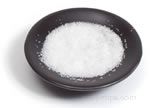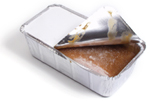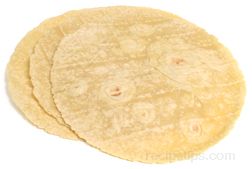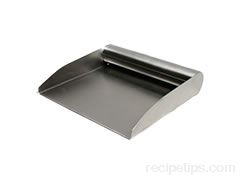Similar Content to: Food Mill
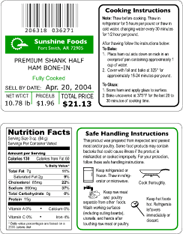
Foods labeled as "fresh" are typically meat, poultry, vegetable, and fruit products. Fresh meats and poultry are required by the USDA to be maintained at or above and never reached temperatures below 26°F. Despite this temperature being below a temperature considered as freezing, the USDA has stated the product still remains "fresh" and pliable at this level. For fruits or vegetables to be labeled "fresh" the FDA requires that they must be raw and never have been frozen, heated, or preserved. If the fruit or vegetable has been treated or processed with wax coatings, low-exposure radiation to kill bacteria, pesticides after harvesting, or mild chlorine washes, the product can retain the "fresh" product label.
The label on fresh foods may have a "sell-by date" printed on it, but the USDA does not require the "sell-by date." It represents the last day recommended for selling the product. Generally the store will pull any products left on the shelf the day of the "sell-by date." If the food is properly refrigerated, it will remain fresh up to three days after the "sell-by date." If it is not to be used within that time, it should be frozen. Some labels may have a "use-by date" rather than a "sell-by date," which means the food should be eaten, cooked or frozen by that date.
The USDA allows meat and poultry products to be labeled as "natural" if they do not contain ingredients, colors, or preservatives that are considered artificial and not "natural" to the product.
A product may be labeled as "organic" if it is grown, doesn't contain ingredients, or is produced without the use of antibiotics, chemicals, fertilizers, and pesticides. The USDA (U.S. Department of Agriculture) has established specific standards that must be followed in order for foods to be labeled as organic and to display the USDA seal of approval on the food label. Their standards require that the food be produced using "earth-friendly" farming practices, limiting the loss of topsoil or soil contamination and maximizing the renewability of the land. Further, the USDA requires that the food products be produced without the use of synthetic fungicides, herbicides, or pesticides. For the production of meat and poultry, the USDA requires that the animals be raised in an environment that provides access to fresh air, sunlight, shade, and other similar environmental features. Further, the animals cannot be treated with antibiotics or hormones and must be fed with foods that are free of chemicals. By adhering to the USDA rules, a food product can be labeled as follows: 1) "100% Percent Organic" refers to products produced with only organic ingredients; 2) "Organic" refers to products produced with 95% to 99% organic ingredients - the remaining 5% or less of ingredients must be listed on the label and can consist of synthetics approved by the USDA; 3) "Made With Organic Ingredients" refers to products produced with 70% to 94% organic ingredients and the remaining percentage can be synthetics on the approved USDA list. Products that have less than 70% organic ingredients can only refer to the fact that the product contains organic ingredients and those ingredients can be listed in the ingredient panel of the label.
The nutritional value of the food will also be shown on the label. The label will show calories, fat and cholesterol content, and it will list the nutrients contained in the food. The label may also contain information such as cooking instructions, food safety and handling instructions.
Some food products, such as meats, may be precooked. If so, the label will indicate that it is "fully cooked" or "ready-to-eat." If it is not, it will clearly indicate to "cook before eating."










